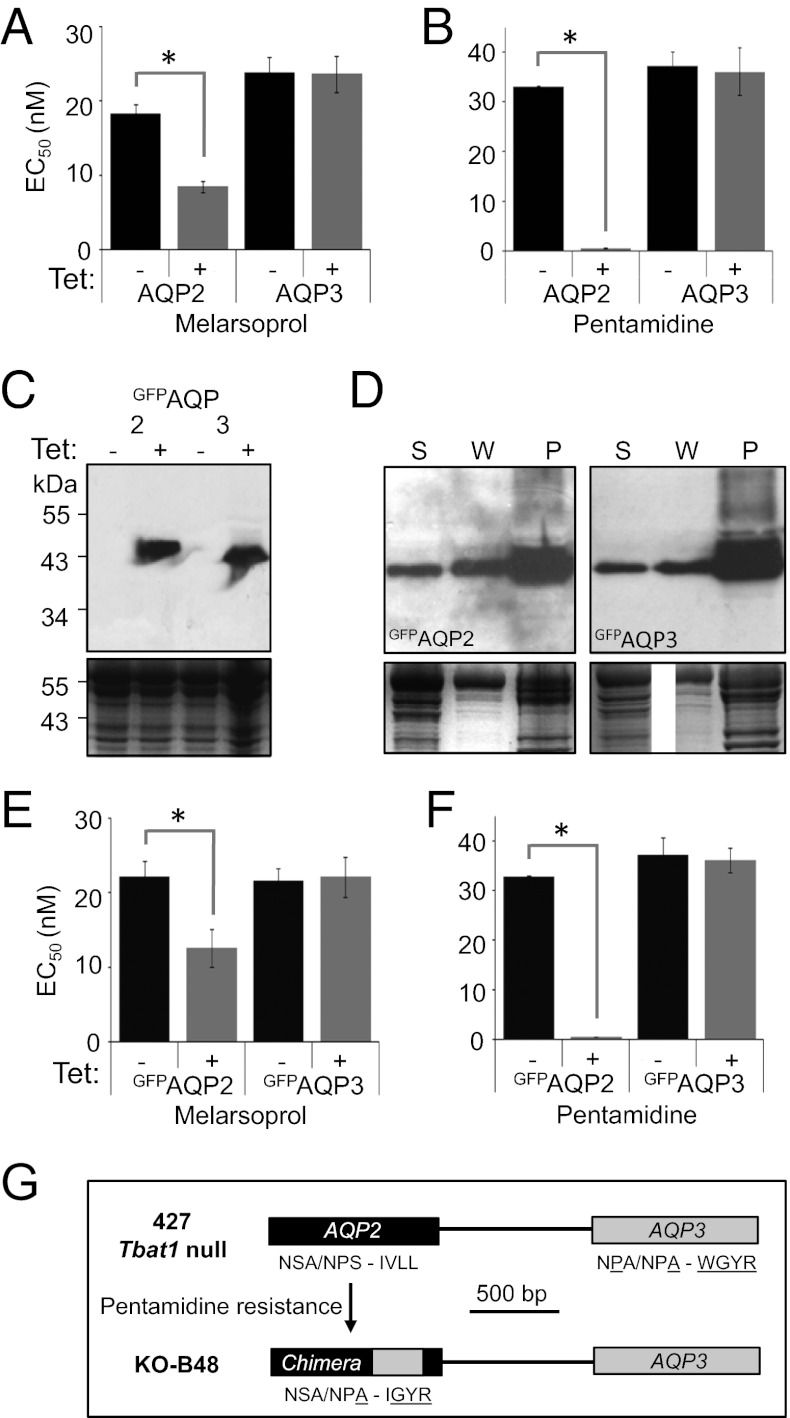Fig. 2.
AQP2 is required for drug sensitivity, whereas AQP3 is neither necessary nor sufficient. (A) EC50 values for melarsoprol following recombinant AQP expression in bloodstream-form cells. aqp2/aqp3 null cells with a tetracycline-regulated (Tet-on) copy of either AQP2 or AQP3 were grown in the absence (black bars) or presence (gray bars) of tetracycline. Error bars, SEM derived from two independent triplicate assays. *P < 0.0001 as determined using nonlinear regression analysis. (B) EC50 values for pentamidine. Other details as in A. (C) Tet-regulated expression of GFP-tagged AQPs. Western blots reveal tightly regulated inducible expression of both GFPAQP2 and GFPAQP3. Both proteins migrated below their predicted molecular mass of ∼60 kDa but proteins with extensive transmembrane regions often display aberrant migration. (D) Both GFPAQP2 and GFPAQP3 are membrane associated. Western blots show supernatant (S), wash (W), and pellet (P; membrane-fraction) following hypotonic lysis. GFPAQPs are expressed in an aqp2/aqp3 null background. (E) EC50 values for melarsoprol. aqp2/aqp3 null cells with a Tet-on copy of GFPAQP2 or GFPAQP3. Other details as in A. (F) EC50 values for pentamidine. Other details as in E. (G) The KO-B48 strain encodes an AQP2/AQP3 chimeric sequence. Schematic illustrates the AQP2/AQP3 locus before and after the emergence of pentamidine resistance. Selectivity filter residues are indicated; six residues are specific to the AQP3 sequence (underlined) and four of these are found in the predicted chimeric protein (Fig. S1).

